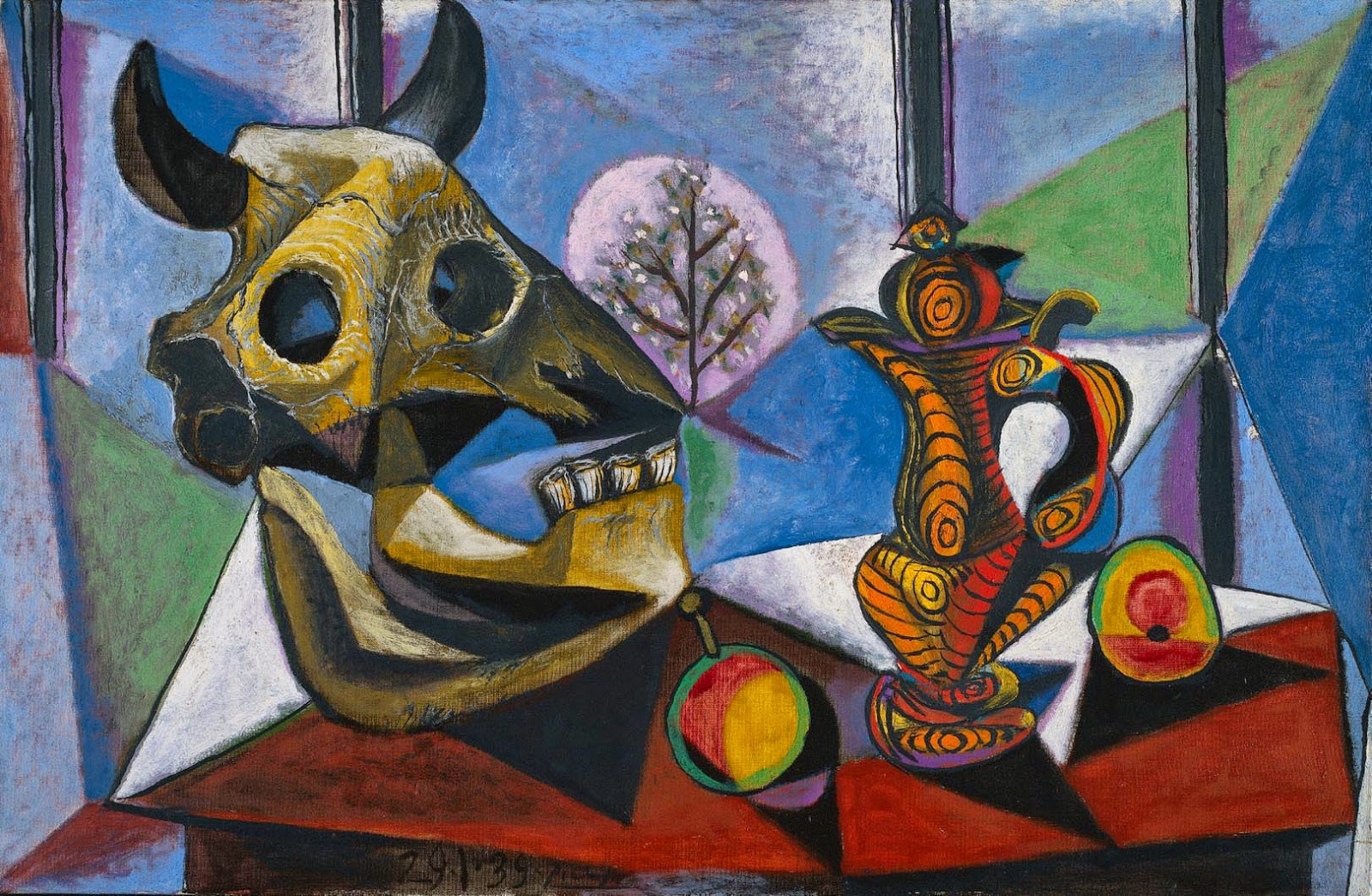- your ideas on the different motives for creating art.
__________
Reference
 |
| Lascaux - c. 30,000 BC |
 |
| Picasso, 1939 |
The EAP Class Blog at https://
academicaua.blogspot.com for students in Peter's classes.
Anyone can read this Blog; only members can post or comment.
 |
| Lascaux - c. 30,000 BC |
 |
| Picasso, 1939 |
Before you click the blue "Publish" button for your first comment on a post, check ✔ the "Notify me" box. You want to know when your classmates contribute to a discussion you have joined.
A thoughtful response should normally mean writing for five to ten minutes. After you state your main idea, some details, explanation, examples or other follow up will help your readers.
Note: only a member of this blog may post a comment.
The arts in the paleolithic seemed to have pratical pupose such as ensuring more plentiful hunting results or praying abundant animal reproductions, whereas the arts in after preshistoric time seems to have personal purpose like respresenting artists' feeling and ideas. We can easily see the difference in the above two arts. The first one is describing hunting scene and the second one is describing what we cannot say it is, it depends on the viewers' intepretations.
ReplyDeleteThanks Katie,
DeleteOne reason I chose this particular Picasso is that it is deliberately a bit abstract, although I think it's still representational enough that we can see what the objects in the still life are. Or maybe I've just spent too much time looking at Picasso's work.
Since Hartmann and Blass's question here is not limited to the Palaeolithic or Mesolithic, I wanted to give a very different example in addition to the obvious choice of an example from the Lascaux caves, which is the art that Kottak discusses. Picasso came to mind because he's my favourite modern artist, but also because he had a fondness for bulls, which are often depicted in his art, and which I thought fit well with the content of some of the Lascaux paintings, such as the one I chose for this blog post.
ReplyDeletetheir cave painting to make sure that they can hunt many animal, record important stories of their life. Or reflect religious or ceremonial purpose. Similarity, arts in Mesolithic.
ReplyDeleteIn the BBC News's "A Point of View: Has modern art exhausted its power to shock?", philosopher Roger Scruton today (2014, December 7. Retrieved from http://www.bbc.com/news/magazine-30343083) argues some interesting ideas that are related to the motives for producing art.
ReplyDeleteIf you are looking for a slightly more challenging article on the BBC News, one that might also suggest some useful ideas for one of the essay questions you are thinking about, you might like to check out Scruton's thesis and his support for it.
I was very pleased to see that Scruton also holds a favourable view of Picasso, whilst agreeing with me in dismissing most of the "art" by such people as Andy Warhol as garbage, although Scruton is a little gentler in his language, but not much.
DeleteThe essay question (here) to which I thought Scruton's essay (here) might be relevant is number 2.
ReplyDelete